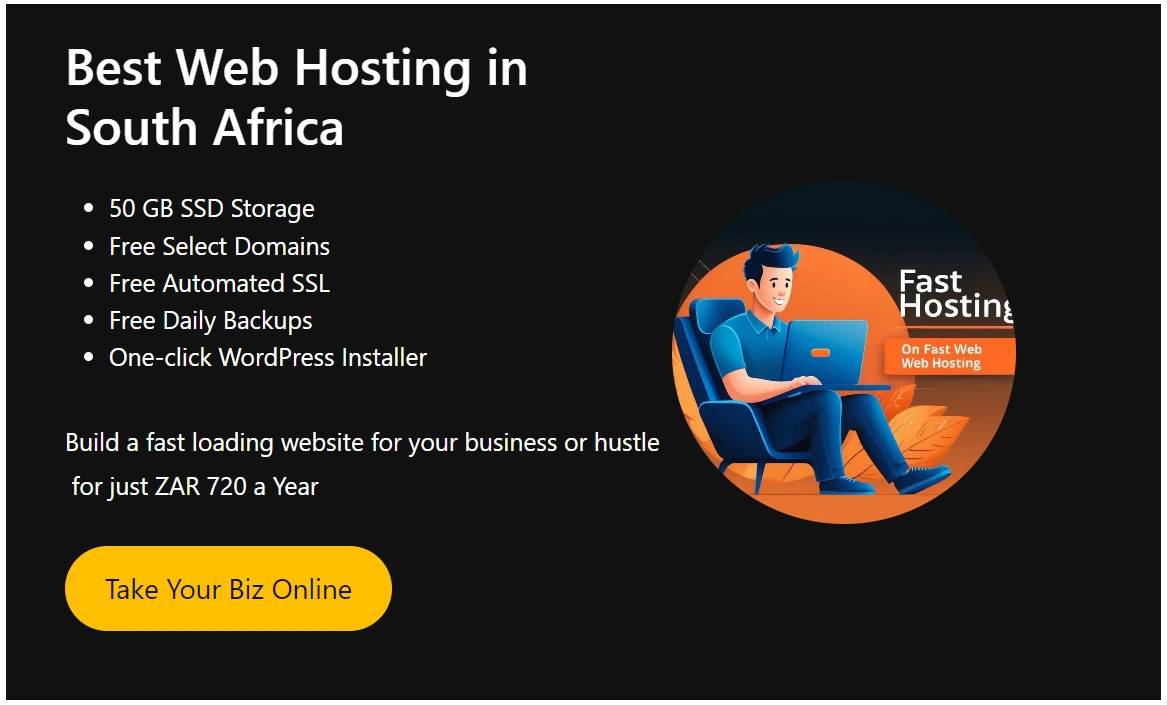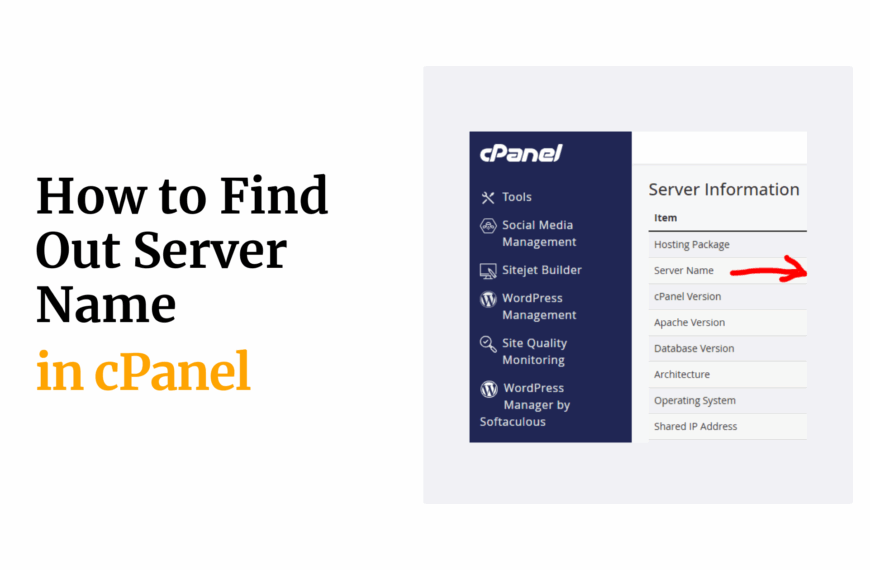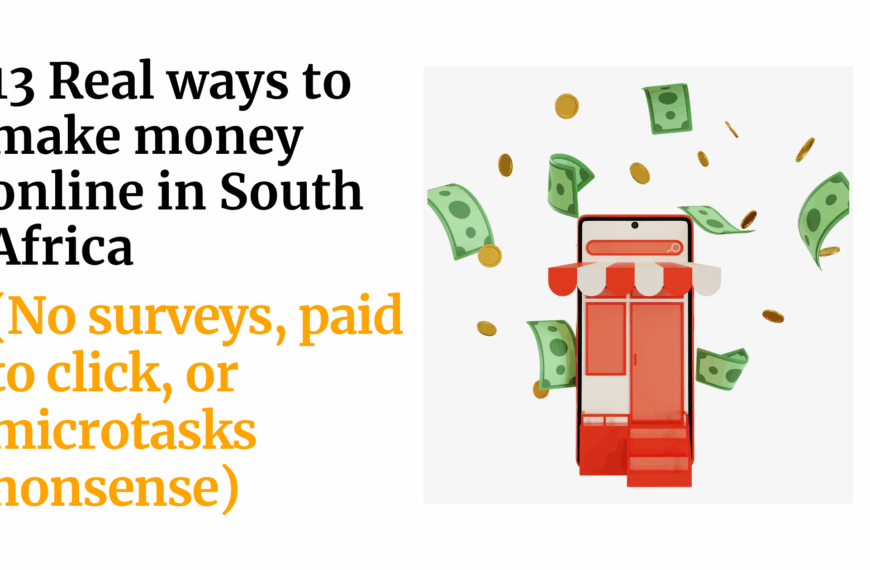E-commerce and online selling continues rapid expansion across South Africa, holding exciting potential even for first-time entrepreneurs.
Dropshipping enables just about anyone to launch their own business selling goods without upfront inventory or shipping costs.
With careful planning and hard work, dropshipping presents a path to generating revenue working from home with minimal financial risk.
The concept behind dropshipping involves playing middleman between suppliers/manufacturers and the end consumer buyers.
Orders received on your e-commerce site are directly forwarded to the upstream supply partner who handles fulfillment.
This frees the dropshipper from warehousing duties and costly product stock.
When structured properly, the margins between wholesale pricing from suppliers and final resale price points cover business profit.
But succeeding with dropshipping in South Africa does take research and persistence.
This guide covers steps from finding suppliers to marketing products using free solutions.
While not utterly free given eventual advertising costs, bootstrapping an online dropship store in South Africa requires fairly modest startup funding.
Table of Contents
Find reliable suppliers and manufacturers
Identifying reliable, cost-efficient manufacturers or wholesale suppliers represents the most crucial foundation step when preparing a South Africa dropshipping operation.
Without solid product sources selling at wholesale rates that still enable satisfactory margins after online markups, the entire customer value proposition crumbles.
Common mistakes here doom many aspiring dropshipping entrepreneurs.
Dedicate time to systematically explore potential supply avenues including:
- Domestic South Africa manufacturers – Many local producers focus on B2B channels.
- Chinese marketplaces – Alibaba and AliExpress offer extensive inventory exported worldwide.
- Niche wholesale platforms – Specialized sites like SaleHoo connect suppliers and resellers.
Evaluate supplier order fulfillment timeliness, shipping rates, minimum order quantities, available product selections and category focus areas as you research options.
| Considerations | Local Manufacturers | Chinese Suppliers | Wholesalers |
|---|---|---|---|
| Cost Per Item | |||
| Fulfillment Speed | Fast | Slow | Varies |
| Minimum Order Size | High | Low | Medium |
| Variety | Low | High | Medium |
Assessing Supplier Viability
With prospective supply sources identified, conduct extensive due diligence before finalizing partnerships. Requirements include:
- Reliability – Consistent order fulfillment and quality controls
- Payment Terms – Flexible CoD vs. prepayment policies
- Shipping Fees – Affordable shipping rates to South Africa
- Lean Operations – Inventory and production optimization
Rush endorsements end badly. Spend time interacting with suppliers to verify customer service responsiveness and capabilities to meet demands cost-effectively.
Resource: 7 Best Dropshipping Stores in South Africa
Set up a Free Dropshipping E-Commerce Store
An appealing, professional-grade online store remains imperative for successfully buying and selling goods via a dropshipping model.
Abundant e-commerce platform solutions now exist allowing entrepreneurs to launch stylish sites extremely affordably, sometimes for free.
While API integrations later help automate order flows across suppliers, the customer-facing store UI demands priority focus early during South Africa dropshipping site creation.
In the meantime, the best free online store platforms include:
- WooCommerce: A popular free eCommerce plugin for WordPress, offering flexibility and various customization options.
- Square Online: Known for its free plan and suitability for food businesses selling online and offline.
- Shopify: While not entirely free, it offers a 14-day free trial and is recommended for businesses of any scalability.
- OLITT: Allows you to create a free eCommerce website, but you’ll need to subscribe to a paid plan once your store grows.
These platforms offer different features and limitations, so it’s essential to consider your specific business needs before choosing the most suitable option.
Evaluating E-Commerce Platform Options
Top e-commerce CMS platforms like WooCommerce and Shopify offer free tiers to start developing stores.
Third-party theme marketplaces provide site templates targeting various niches.
Consider core components like:
- Modern, mobile-friendly themes
- SEO optimizations
- Payment gateway integrations – PayFast, Peach Payments
- Shipping and tax calculations
- Marketing tools – coupons, email collecting redirects
Configuring Custom Branding
Beyond structuring an attractive layout showcasing products for sale, apply unique branding elements to stand out.
Names, logos, color palettes all help form site identity. Add an About page detailing your mission and story for a personalized touch.
Setting Realistic Pricing Strategy
Research competitor site pricing when identifying initial price points to cover profits margin while remaining aligned with customer expectations.
Account for currency conversions, taxes and shipping rates.
Strive for 2X to 3X gross markups from supplier costs as a baseline pricing model for inexperienced dropshippers.
Read also: How Much Money Can You Make As A Dropshipper in South Africa?
Drive Traffic to Promote Dropshipping Products
An adeptly built online store with competitive pricing means little without steady visitor traffic discovering available products.
Marketing represents the engine driving e-commerce discovery and conversions for dropshipping stores lacking behind-the-scenes warehousing operations.
Combining free and paid avenues moves the needle including:
Social Media Promotions
- Strategic business page content on Facebook and Instagram drives free referrals
- Create shareable posts showcasing products
- Run occasional giveaways requiring signups
Search Engine Optimization
- On-page SEO improvements – page speed, tags, URL structures
- Content marketing – product guides, blog posts, videos
- Target relevant long-tail keywords with low competition
Email Marketing
- Collect customer emails with popup signup incentives
- Send promotions for new product arrivals
- Nurture subscribers towards repeat purchases
Paid Advertising
- Facebook and Instagram highly targeted to relevant demographics
- Search ads via Google Ads bid on commercial product terms
- Retarget shoppers who previously visited site with deals
A multifaceted digital marketing strategy combines pulling visitors via educational content alongside pushing product promotions out to engaged prospects across multiple channels.
Fulfill Orders and Managing Logistics
With suppliers secured, online store launched and sales pipeline ignited from marketing campaigns, addressing logistical operations keeps the dropshipping flywheel smoothly spinning.
Inventory status syncing, order notifications and fulfillment orchestration represent crucial back-end workflows.
While manual supplier order placement suffices initially for very small order volumes, this tedious process quickly hinders scaling.
Integrating e-commerce site data exchanges using API mappings helps dropshipping entrepreneurs automatically manage supply chains.
API Integrations
Platforms like Shopify and WooCommerce publish APIs to build custom apps and scripts extending functionality.
Developers can construct connectors between store and supplier systems to facilitate:
- Inventory level data sharing across marketplaces
- Automatic order notifications as purchases occur
- Tracking status updates throughout fulfillment cycles
This infrastructure allows creating fairly automated order flows between e-commerce stores and upstream suppliers fulfilling shipments following online checkout conversion.
Addressing Logistical Challenges
Common pain points around running nationwide delivery operations from suppliers to residential customers include:
- Inconsistent or delayed fulfillment from suppliers
- Packaging mishaps damaging goods in transit
- Failed delivery attempts wasting time and money
- Complex returns and exchanges
Proactively develop policies and contingency plans addressing such scenarios. Also monitor changes around domestic shipping regulations and tax laws affecting imports impacting profit margins.
Legal and Tax Considerations
South African regulations impose several crucial compliancy considerations for online businesses to maintain legitimacy, access financial services, properly track taxes owed and avoid disruption.
Dropshippers must navigate requirements spanning multiple government agencies and industry players to sustain operations.
While no special legal framework explicitly exists governing dropshipping currently within South Africa, adhering to general e-commerce statutes and understanding tax obligations helps avoid nasty missteps as operations grow earning reasonable revenues.
Key Government Compliance Checklist
- Register company as legal business entity like sole proprietorship or PTY
- Acquire local municipal trade licenses from city centers
- Document BEE scorecard advancing empowerment credentials
- Setup CIPC profile for public look up checks
Tax Registration
- Apply for tax number via SARS for income, value-added and provisional tax
- Issue VAT invoices to collect taxes on sales
- Submit regular tax returns
Payment Processor Onboarding
- Provide tax ID, bank statements and trade licenses
- Pass KYC + compliance checks
Neglecting compliance creates major business disruptions down the line once on authorities radar. Invest early effort staying on good standing.
Key Takeaways
Based on the detailed guide covering everything from product supply to marketing when launching dropshipping ventures in South Africa, here are few core takeaways:
- Finding reliable low-cost South African or international suppliers with efficient fulfillment enables establishing a solid customer value proposition and financial model.
- Leverage free e-commerce platforms like WooCommerce or Shopify for launching elegant online stores, rather than coding from scratch.
- Drive organic site traffic through search optimization and social media alongside paid ads for product visibility.
- Automate order flows via API integrations to simplify scaling order volumes.
- Remember to formally register businesses and comply with tax obligations.
- Continually reinvest profits into better suppliers, marketing improvements and customer support.
- While minimizing initial product inventory risks, dropshipping still demands extensive effort driving visibility and sales.
So with the proper strategic blueprint covering operations from product acquisition to order delivery, dropshipping indeed provides a pathway to generate real revenues bootstrapping South Africa e-commerce brands.
 Web Hosting
Web Hosting Windows HostingBuilt for Windows apps and websites – stability, speed and flexibility
Windows HostingBuilt for Windows apps and websites – stability, speed and flexibility Reseller HostingLaunch a hosting business without technical skills or expensive infrastructure
Reseller HostingLaunch a hosting business without technical skills or expensive infrastructure Affiliate ProgramRefer customers and earn commissions from sales across our platform
Affiliate ProgramRefer customers and earn commissions from sales across our platform Domain SearchFind and secure a domain name in seconds with our quick lookup tool
Domain SearchFind and secure a domain name in seconds with our quick lookup tool CO ZA Domains
CO ZA Domains All DomainsExplore domain names from over 324 TLDs globally – all in one place
All DomainsExplore domain names from over 324 TLDs globally – all in one place Free Whois Lookup Tool South Africa
Free Whois Lookup Tool South Africa VPS
VPS SSLs
SSLs







